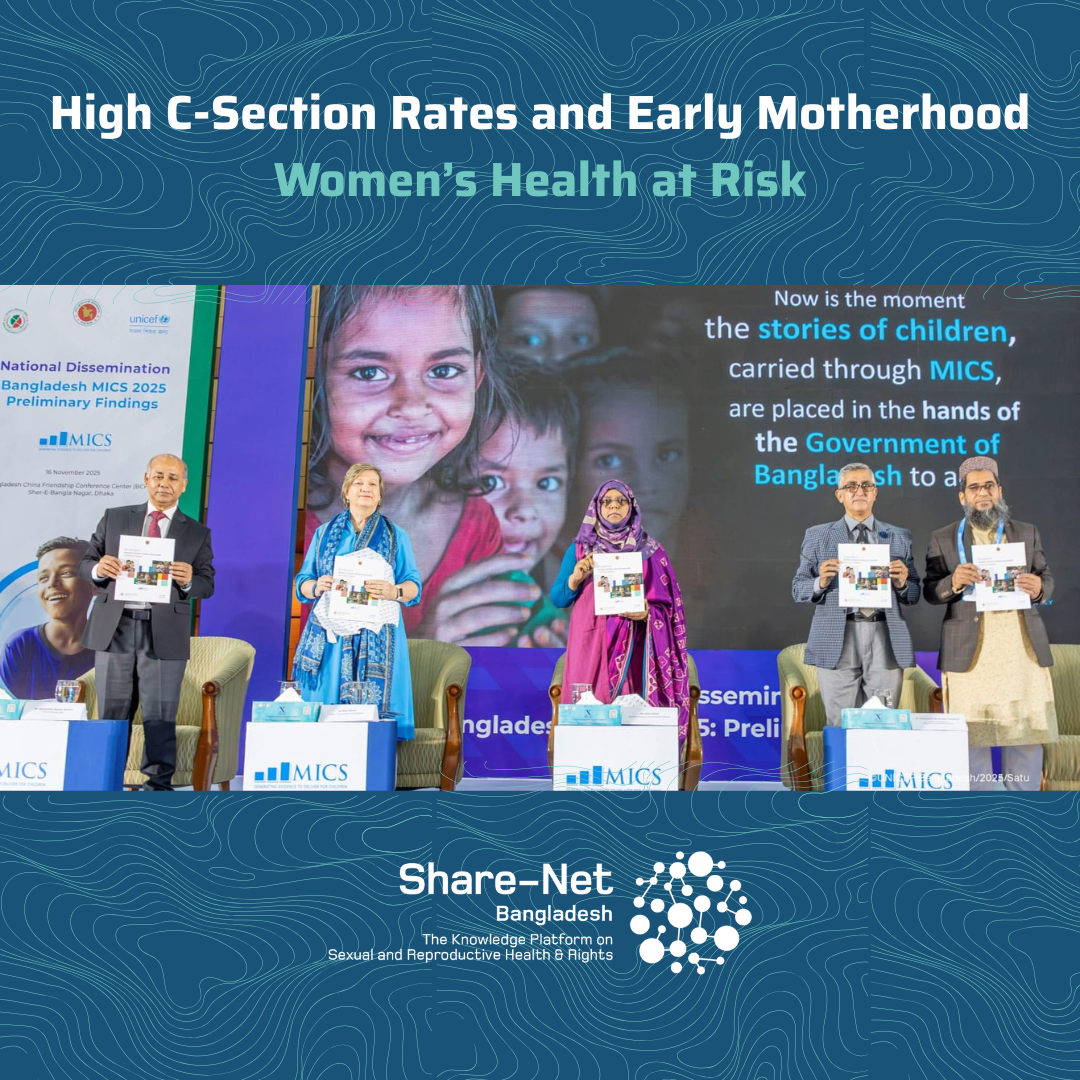High C-Section Rates and Early Motherhood: Women’s Health at Risk
Child Marriage at 47%, Adolescent Birth Rate Rising; Institutional Delivery Up, but C-Section Exceeds 50%: MICS Survey
The preliminary findings of the recent Multiple Indicator Cluster Survey (MICS) 2025, conducted by the Bangladesh Bureau of Statistics (BBS) and UNICEF, have raised serious concerns regarding the state of Sexual and Reproductive Health and Rights (SRHR) in the country. The survey data reveal that while some progress has been made, the dual challenges of adolescent motherhood and excessive surgical interventions during delivery pose a significant threat to the health and well-being of women.
Despite persistent social and economic barriers, the rate of child marriage has only slightly decreased, with approximately 47 per cent of girls still being married before the age of 18. This statistic directly contributes to early motherhood. The survey shows that the birth rate among adolescents has increased from 83 per 1,000 in 2019 to 92 per 1,000 in the 2025 assessment. In effect, the risk of adolescent motherhood in the country has intensified.
This issue disproportionately affects the most vulnerable segments of society. Among women aged 20 to 24, one in every four rural women and one in every five urban women gave birth before reaching 18. Pregnancy at an immature age creates severe health risks and complications for both the mother and the newborn.
A positive development in maternal health services is the rise in institutional deliveries, which have increased to 71%. The use of skilled birth attendants has also improved. However, the method of delivery remains a major concern. The rate of Caesarean Section (C-Section) deliveries has uncontrollably increased, surpassing the 50 per cent mark!
In urban areas, this figure is even higher at 56 per cent. Crucially, the rate increases with the mother’s wealth and education level, clearly indicating that deliveries are often being ‘medicalised’ unnecessarily, irrespective of clinical need. This trend places additional physical and financial burdens on mothers.
The survey reveals gaps in the quality of care provided. While 93 per cent of women received at least one visit from a skilled health worker during pregnancy, only 43 per cent received the minimum four visits recommended by the World Health Organisation (WHO). This indicates a major shortfall in the necessary regular follow-up and comprehensive care for expectant mothers.
Furthermore, the practice of initiating breastfeeding within the first hour after birth, vital for the newborn’s nutrition and immune system, has declined to 30 per cent. This drop is a serious concern for infant health and development.
The MICS 2025 data present a formidable challenge to our health system. Urgent policy intervention to prevent child marriage, mitigate the risks of adolescent motherhood, and curb unnecessary C-Sections is now crucial to ensuring a safe future for women and adolescents.
Above all, MICS 2025 offers a clear snapshot of the lives of children and women in Bangladesh. It illustrates how far we have come and what further action is required for every child. It provides policymakers with an evidence base for urgent, targeted action, ensuring that children remain at the centre of policies, budgets, and services. At the same time, it holds us all more accountable, as we now have more accurate information on children’s needs and challenges.
Source: The Business Standard and UNICEF Press Release.

